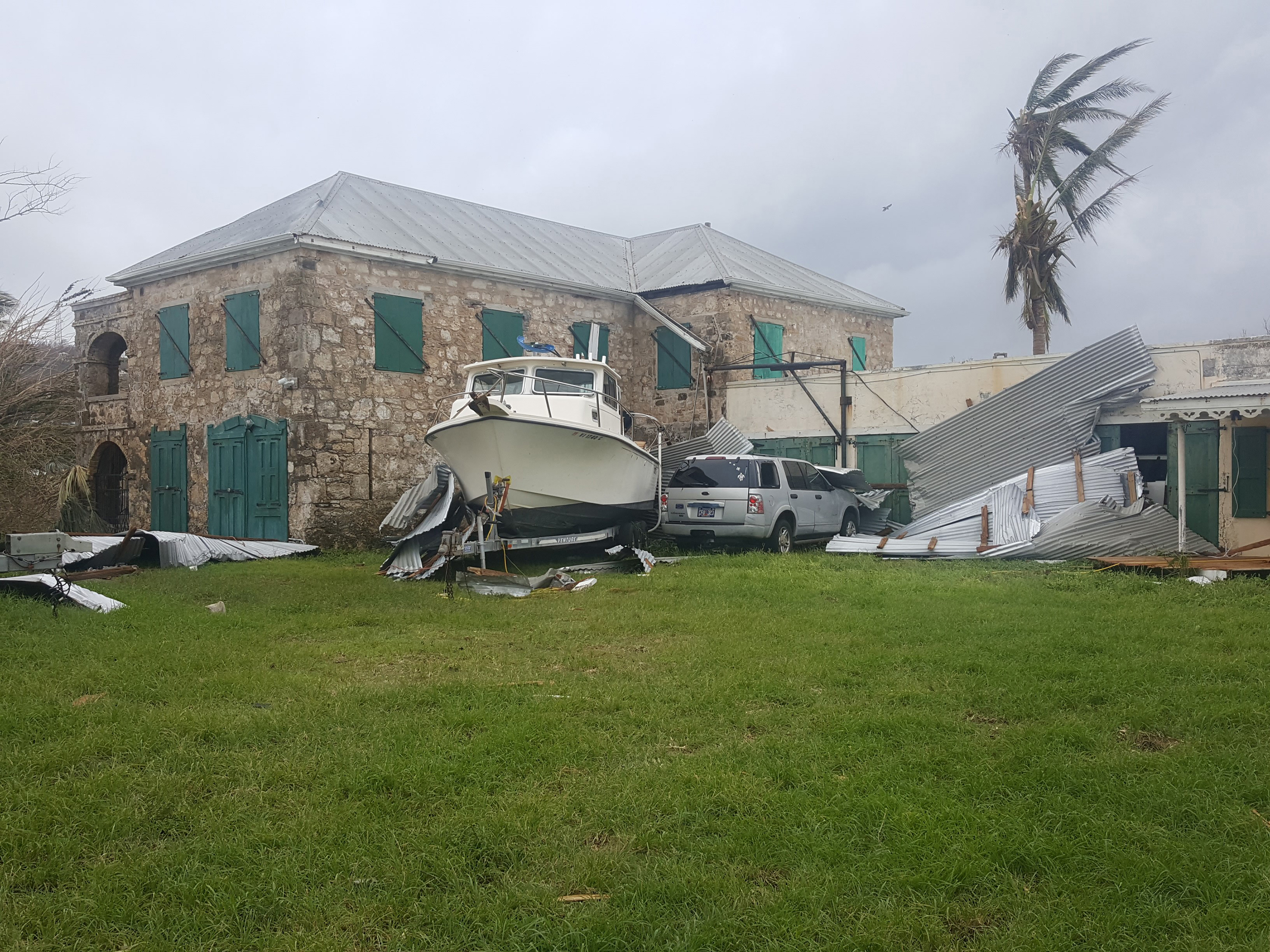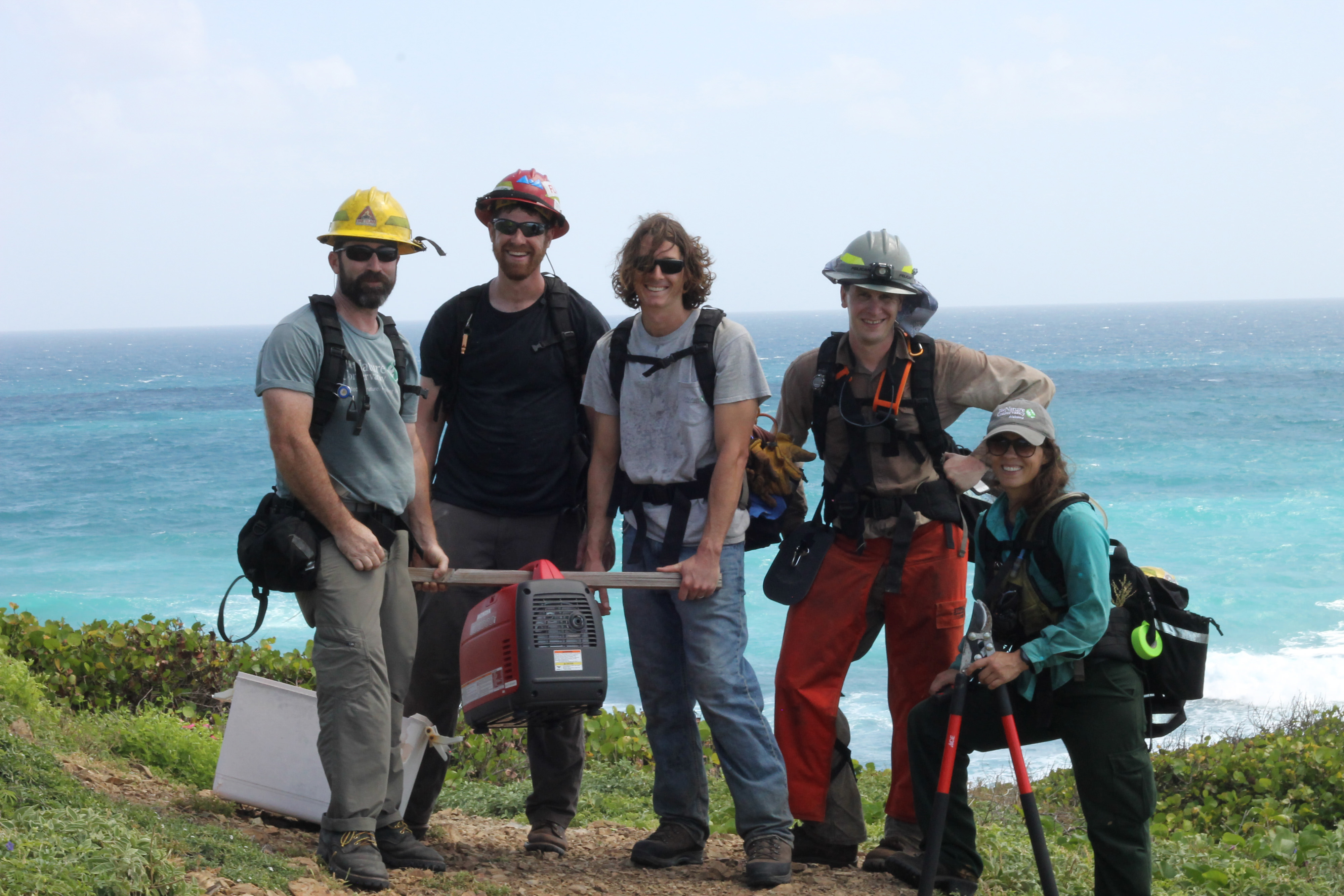Virgin Islands Hurricane Recovery Crew
From far and wide, Conservancy staff across the mainland U.S. arrived in the Virgin Islands to help nature heal after Category 5 hurricanes.

The 2017 Atlantic hurricane season was one of the worst in recorded history, resulting in catastrophic damage to multiple Caribbean islands. Category 5 Hurricanes Irma and Maria tore through the region within two weeks of each other, hitting several islands the Conservancy helps protect. In the U.S. Virgin Islands, Irma pummeled St. Thomas and St. John, followed by Maria’s devastation of St. Croix.
In response to these disasters, the Conservancy put a plan in motion to help nature and people in the Virgin Islands, which is home to stunning nature preserves, nationally protected waters, coral restoration nurseries and endangered sea turtle nesting sites.
Conservancy fire crews from over eight states in the mainland U.S. were mobilized to the ravaged islands. These crews typically conduct controlled burns across U.S. landscapes to support healthy ecosystems but, in this time of need, they flew to the scene with much-needed gear and supplies, ready to devote lots of sweat and tireless work to move recovery efforts forward. They removed dangerous debris from roads, reestablished safe access to nature preserves, national parks, and public access trails, and helped restore landscapes, coasts and wildlife sites. They also worked closely with local government to prevent destructive post-hurricane flooding by clearing debris from streams and roads.
“There were electric poles and lines down everywhere, blocking the streets,” said Director of Fire Management, Blane Heumann. “There were pieces of buildings, roofing material, steel sheeting and plywood randomly strewn across the island. Upon landing, I looked out the window and saw the wings of an airplane in the bushes and the nose of another airplane turned upside down in a ditch. It was pretty striking.” But, the men and women from the Conservancy who volunteered for the recovery efforts learned on the job that nature is resilient and can heal with the hard work of dedicated people.
The crew members—hailing from Alabama, Florida, Louisiana, Mississippi, Missouri, South Dakota, Texas and Virginia—worked long hours in very hot temperatures with limited access to potable water and electricity, relying on generators and water filtration systems to support their day-to-day existence. They accomplished some impressive feats, including:
- Restored access to Conservancy preserve Estate Little Princess and salvaged native trees across the landscape
- Cleared trails and coastal areas at Jack and Isaac Bay Preserve, an endangered green and hawksbill sea turtle nesting site
- Reestablished access to and restored trails at Sandy Point Wildlife Refuge, an endangered leatherback sea turtle nesting site
- Supported the Public Works Department with clearing streams clogged with debris, focusing on flooded areas that cause damage to property and roads
- Repaired damaged boardwalk and cleared debris at Magens Bay Preserve on St. Thomas so that it can once again be a tourism destination and support the local economy
The impact the recovery crews made in the Virgin Islands was tremendous, with daily words of appreciation from hikers, residents and government agencies. "Unfortunately, hurricanes are predicted to become worse and more frequent, " says Rachel Granberg, a Coastal Forest Land Steward for the Conservancy's Alabama Chapter who was part of the first crew that arrived on St. Croix. "It's something we understand and would love to be available to help with in the future. This is one of so many times that the Conservancy's response to natural disasters has made me very proud."
